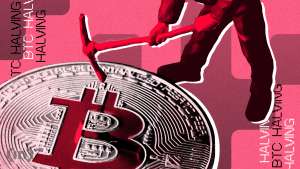The Crypto Community Can Be Its Own Worst Enemy

[ad_1]

Sometimes the crypto community can be the technology’s worst ambassadors. It’s hard to bring people into this space, and some people make it harder still.
My career in crypto is more by accident than design. I chose my first job because it paid the best of the many I was offered. Luckily, I had been following the space for several years. I first traded Bitcoin in 2014. But, honestly, if a better-paying job had come along with the right conditions, I would have taken it. I had no emotional attachment to crypto then.
Things are different now. I have opinions about the industry, sometimes when I don’t want to. (Especially when I don’t want to.) In the years since, I have found myself among my non-crypto friends—which is all of them—explaining the definition of Web3, defending NFTs, and batting away eye-rolls and dismissive looks about my industry and choice of career.
One time, I remember comparing the crypto ecosystem to a Premier League fan in a pub. “It’s just like crypto,” I said. His expression was quizzical as he held his pint, clearly unconvinced. I told him that crypto fans often treat their coins like their favorite football team. “No, Josh,” he said. “You don’t get it.” He knew more about football. I knew more about crypto. We were talking past each other.
“No,” I said. “You don’t get it.” I pulled out my phone and scrolled through the abyss that is crypto Twitter. “Look,” I said, my eyes darting back and forth. We shared a gaze of understanding. He got it. I used an expletive to describe the feed in front of me. He nodded.
Treating Tokens Like Sports Teams
Introducing someone to crypto isn’t as easy as we say it is. We always talk about “onboarding” and the next billion users. We also talk about how to get there, at least in abstract terms. But rarely do we confront the world we’re asking them to enter. The social ecosystem of which we are a part.
There’s a lot of hatred for crypto right now. It is, of course, a generalization, but the general rule holds true. Post-FTX, it feels harder than ever to bring people into the space. But I’m not sure it was much easier in the past. Fewer people than we would like to admit entered this industry due to its breakneck growth, in pursuit of a quick return on the markets or a job.
In 2021 and early 2022, we had the first mass-market bull run. People were building, prices were up, and the outside world was paying attention. Every journalist, from the lowliest tabloid to the most prestigious paper, wanted to talk about crypto and Web3. Depending on who you asked and what you read, crypto was full of criminals, drug addicts, nerds, and billionaires. (Or all the above.) Many people were fascinated by the journey and the story. Fewer were taken by the technology, which is a deep shame.
Crypto Culture May Feel Like a Collective Delusion
When the market crashed, and the tides receded, a lot of crypto’s quirks looked even stranger. “X Token is going to the moon!” Is it, though? Is it really? To fully envelop yourself in crypto culture sometimes feels like consenting to a mass delusion. I have done PR for various projects and watched as anonymous figures shouted “HOLD UNTIL I DIE” into the digital mist. Whether or not it was a bot is beyond the point. Once you cut below the first layer, there is a level of unhinged posting which takes some getting used to.
I recently had a conversation with a crypto broker who had been in the industry for over a decade. He was the most recent of many people to say (conservatively) that 95-98% of all NFT projects were eventually going to zero. Most of them are probably scams, he said. To anyone familiar with the industry, this is not a surprising or controversial take. Most traders are complicit in this to some extent. Who cares if you sell an NFT for a profit before it goes down the drain? You don’t own it anymore. Some other idiot does.
There’s nothing wrong with following market cycles or chasing a profit. It comes with a certain level of nihilism that many will find off-putting.
A recent survey showed that 60% of NFT consumers had never heard of utility NFTs. So, not only is this a market built on shaky moral ground, but many people don’t even understand what they’re buying. Come on in guys!
Crypto Doesn’t Have a UX Problem, Actually
Understandably, one of the first things someone will see upon entering “crypto” is Twitter, where a lot of this unhinged posting takes place. In one corner sits a cogent, insightful thread on how we’ll all use NFTs for tickets one day. In the other is a man shouting, “BUY THE DIP,” arms flapping in all directions. Then there’s the person who implies that crypto UX and jargon aren’t too complicated, actually. If you don’t get it, well, I guess you’re an idiot.
Of course, we can’t forget crypto’s version of the man holding the cardboard sign saying THE END IS NIGH. There is always a financial apocalypse just around the corner, and everyone is always just about to buy Bitcoin, so you better get in now.
Sometimes, I’ll find myself gravitating to politics on Twitter to watch other people call each other Nazis. Just for a bit of calm. The word “community” often gets bandied about in crypto. But as a “community,” things can be pretty crazy here. Can we really blame someone who takes a curious peek in the door and runs at the first opportunity?
The crypto community isn’t unique in its online ugliness, there is plenty of competition. It’s also far from the strangest online clique or the most deluded. There are also plenty of great ambassadors for this underlying technology and legions of impressive people building it. But I do worry that better UX, security, and use cases won’t be enough. The call is coming from inside the house.
Disclaimer
The information provided in independent research represents the author’s view and does not constitute investment, trading, or financial advice. BeInCrypto doesn’t recommend buying, selling, trading, holding, or investing in any cryptocurrencies
[ad_2]
Source link









